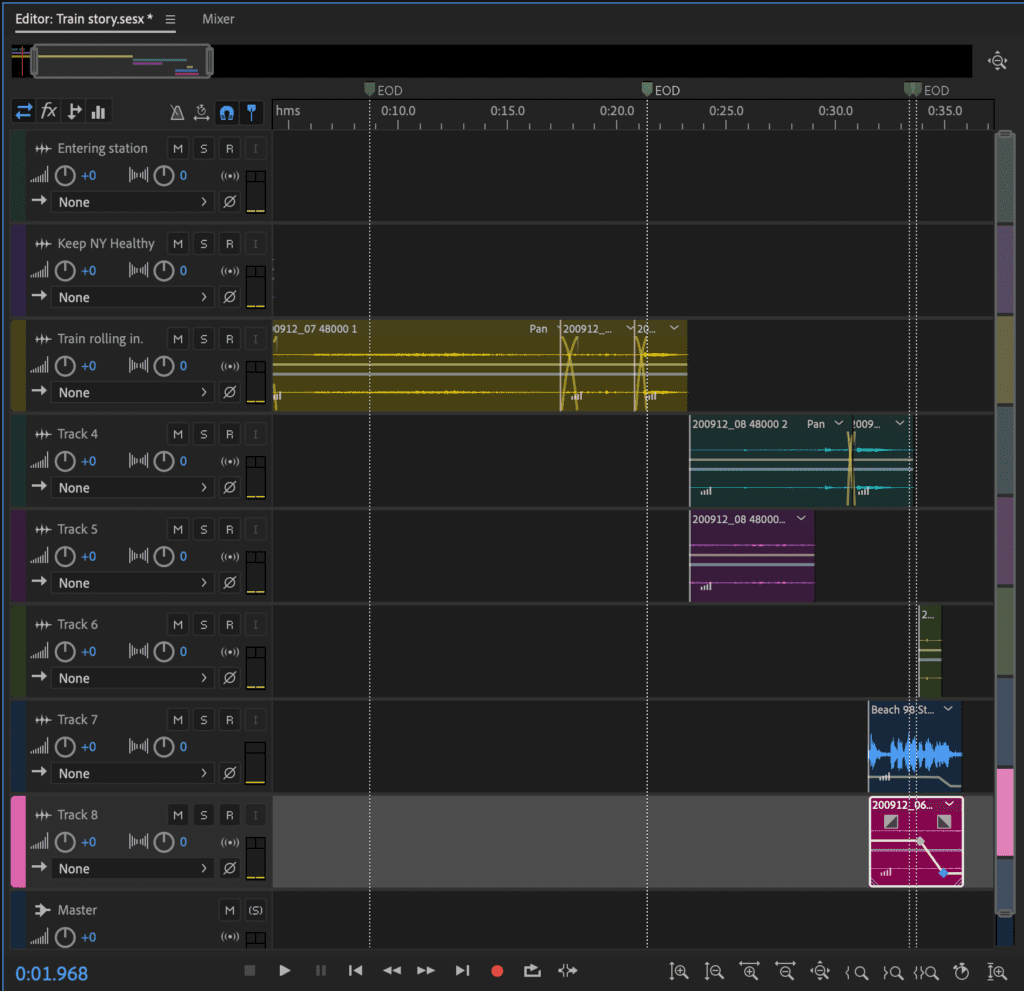Sound Collage Study:
For my first assignment, I made a recording of a subway journey. This past year I haven’t been riding the subway very much at all, which is strange. I got thinking of this assignment, layering sounds, and the subway kept popping into my mind. I wanted to record the familiar sound of the conversations on the train, the clicking of the turnstile, the ding of the closing door, and of course, the screeching of the wheels. Usually, I pop in my headphones and drown out the sound, but I missed them, so I set out for the first time in months to ride the train. Back home, I used Audition to layer the clips because, just like the rest of NYC, everything is crammed together fitting vying for attention.

I would like to dive deeper into transitions and cleaning up sound. I feel that my audio cuts are far too noticeable.
____________________________________________
Thoughts on “The Danger of a Single Story”:
I’m moved by novelist Chimamanda Adichie’s TED talk on the harmful impacts of telling a single story. She spoke on how we naturally create stereotypes of other people and cultures by only tuning in or listening to available stories. By not investigating entirely how a culture, country, continent, or person is made up, we go down a path of miscommunication and misunderstanding. This is something that we are all guilty of and need to work harder on understanding to prevent. I appreciate that she shared her own experiences both as a person being stereotyped and as someone who is stereotyping. I don’t believe that single stories are ever going away; instead, everyone needs to learn to identify and openly speak about them. By doing so, we can all get a little better.
Two of my favorite quotes from the talk are:
“So that is how to create a single story, show a people as one thing, as only one thing, over and over again, and that is what they become.”
“The single story creates stereotypes, and the problem with stereotypes is not that they are untrue, but that they are incomplete. They make one story become the only story.”
____________________________________________
Thoughts on “The History of Sound Art”:
A History of Sound Art from J Milo Taylor on Vimeo.
This entire composition was challenging to digest. I found myself being removed from the piece entirely during the long stretches of what seemed to be random and disconnected noise samples. To make some sense of the non-speaking sections I started to listen for interesting single sounds and effects that I would like to include in my work. At roughly 12mins 29secs, there is a beautiful scratching sound for example. These individual sounds brought up memories, sparked emotion, and sometimes just sounded interesting. I thought that the comment at 28mins 02 sec “With our whole being we can be responsive to sound. It doesn’t have to be communication of some deep thought.” was fitting for the way I was experiencing the piece.
Overall, I enjoyed the artist’s explanations of their work and process, for example, the one description of how the performer was scratching, cutting, and distorting records to produce new works. However, I continued to be pulled out when quotes were getting repeated or harsh noises were played over the tops of what they were saying.
